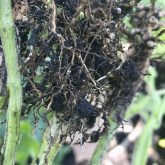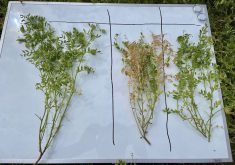Jing Xie et al. at the University of Saskatchewan recently published results from a study comparing soybeans, peas and lentils for their nutrient benefit for following crops.* The small-plot study was repeated at four Saskatchewan locations: Scott (dark brown), Saskatoon (dark brown), Rosthern (black) and Yorkton (black).
At each site, three cultivars each of short-season soybeans, lentils and peas were planted in 2014, followed by wheat or canola in 2015 and canola or wheat in 2016. All sites were in no-till systems and had spring wheat in 2013.
Generally, soybeans removed more nitrogen (N) and phosphorus (P) in its seed than did peas and lentils; peas and lentils had more N and P in their remaining plant biomass. Yet even though peas and lentils left more N and P behind, the study found no consistent differences in the following wheat or canola yield and nutrient uptake.
Read Also

Ontario farmers partner for success
Ontario business partners, Matt Bergman and DJ Wassenaar, have been farming together for 10 years. Their focus on integrating unconventional…
However, Jing Xie’s report does include some key observations and an important conclusion.
“Given the dry conditions in May and June of 2015, it is possible that mineralization did not reach the maximum, muting the effects of the previous crops on soil nutrient supplies, crop yield and nutrient uptake,” the report notes.
In conclusion, the report says: “Higher N and P concentrations in soybean grain across the sites indicated greater potential for depletion by crop removal over the long term. Therefore, soil N and P removals need to be considered when rotations with soybean are used for several cycles compared with pea and lentil rotations.”
*Jing Xie et al., “Yield and uptake of nitrogen and phosphorus in soybean, pea, and lentil and effects on soil nutrient supply and crop yield in the succeeding year in Saskatchewan, Canada,” Can. J. Plant Sci. 98: 1—12 (2018).















